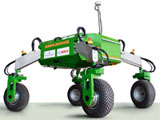Agricultural and Biological Systems Engineering, Department of

Department of Agricultural and Biological Systems Engineering: Faculty Publications
ORCID IDs
Document Type
Article
Date of this Version
2020
Citation
Sustainability 2020, 12, 321
Abstract
Soil moisture sensors can be effective and promising decision-making tools for diverse applications and audiences, including agricultural managers, irrigation practitioners, and researchers. Nevertheless, there exists immense adoption potential in the United States, with only 1.2 in 10 farms nationally using soil moisture sensors to decide when to irrigate. This number is much lower in the global scale. Increased adoption is likely hindered by lack of scientific support in need assessment, selection, suitability and use of these sensors. Here, through extensive field research, we address the operational feasibility of soil moisture sensors, an aspect which has been overlooked in the past, and integrate it with their performance accuracy, in order to develop a quantitative framework to guide users in the selection of best-suited sensors for varying applications. These evaluations were conducted for nine commercially available sensors under silt loam and loamy sand soils in irrigated cropland and rainfed grassland for two different installation orientations [sensing component parallel (horizontal) and perpendicular (vertical) to the ground surface] typically used. All the sensors were assessed for their aptness in terms of cost, ease of operation, convenience of telemetry, and performance accuracy. Best sensors under each soil condition, sensor orientation, and user applications (research versus agricultural production) were identified. The step-by-step guide presented here will serve as an unprecedented and holistic adoption-assisting resource and can be extended to other sensors as well.
Included in
Bioresource and Agricultural Engineering Commons, Environmental Engineering Commons, Other Civil and Environmental Engineering Commons


Comments
© 2019 by the authors.
Open access
doi:10.3390/su12010321